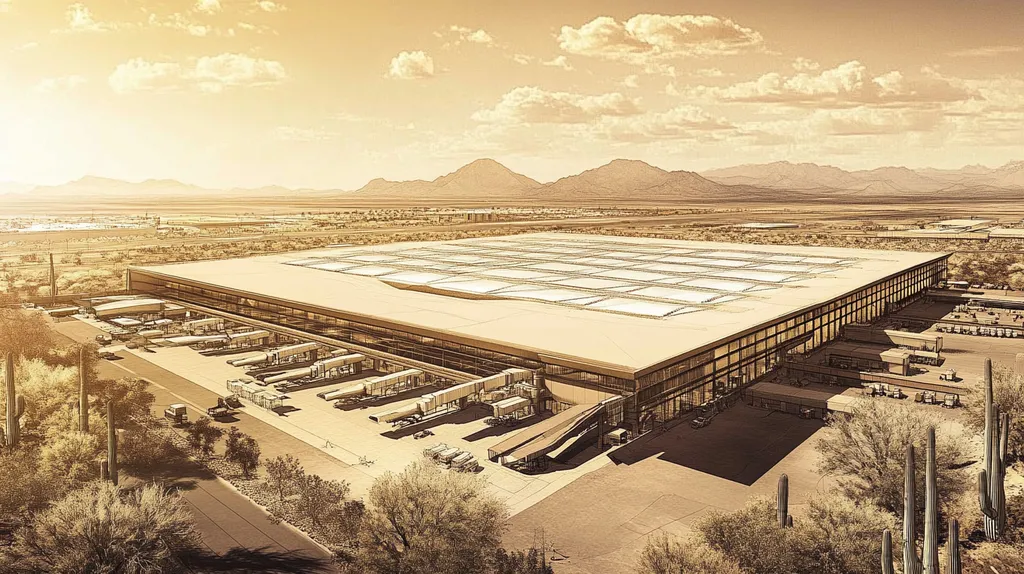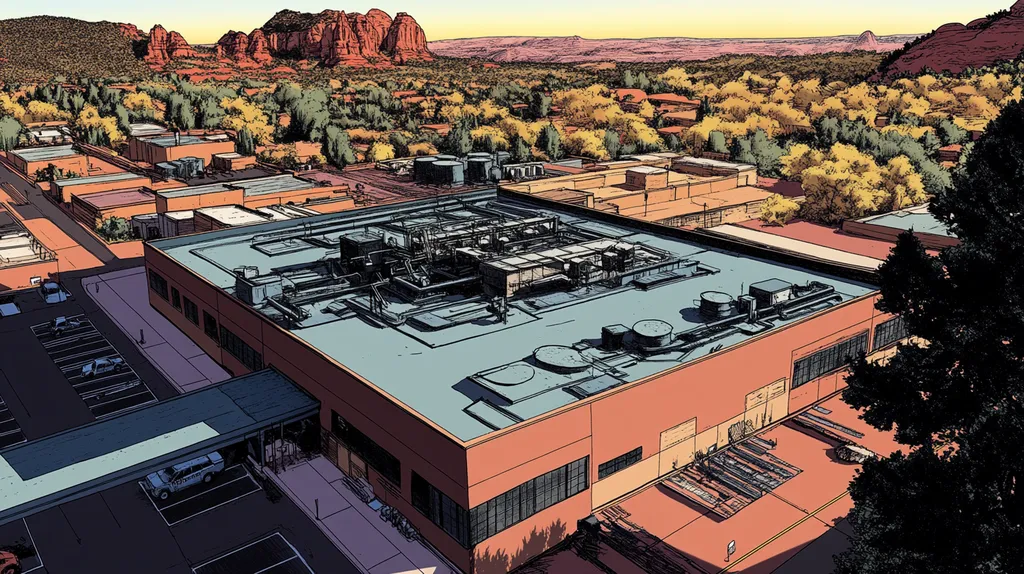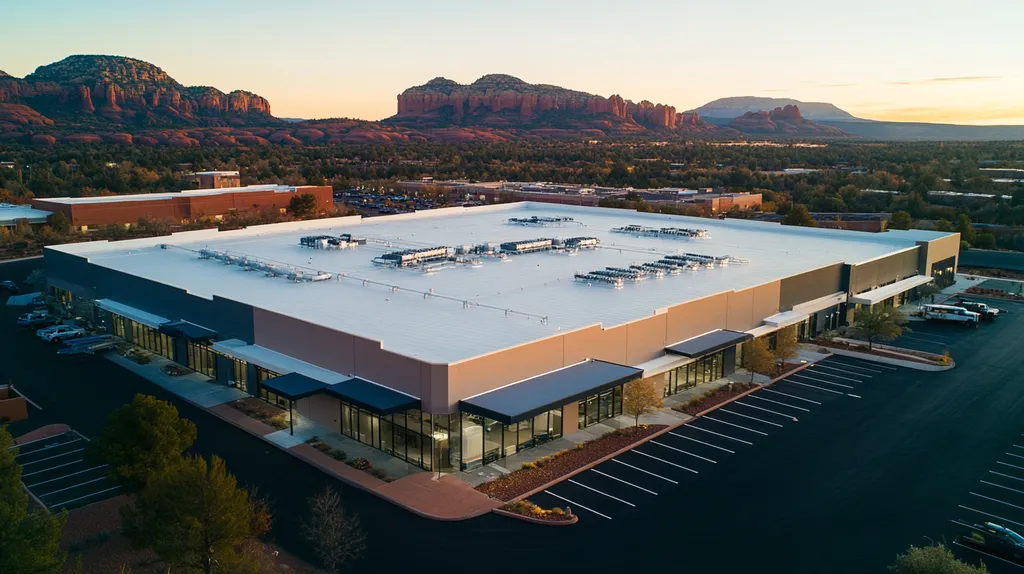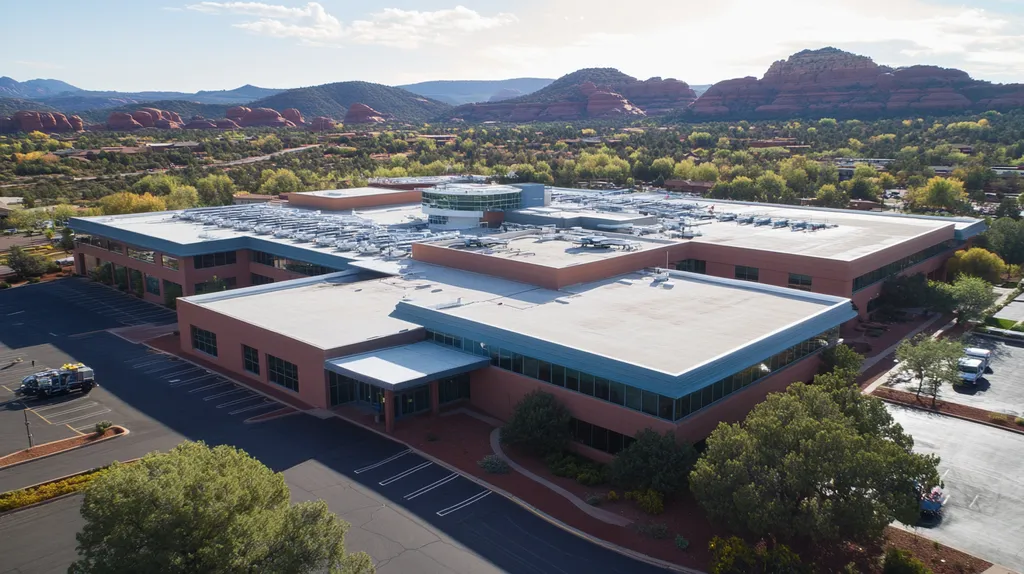Misunderstandings about commercial roof coating drying times cost property owners millions annually in premature failures and repairs. Industry data shows that up to 40% of coating applications face complications due to incorrect drying assumptions.
From weather conditions to surface preparation, multiple factors influence how quickly and effectively these critical protective layers cure. Even minor miscalculations can compromise an entire roofing system.
This comprehensive guide separates fact from fiction regarding coating drying times, examining common misconceptions, practical implications, and evidence-based solutions that protect your roofing investment.
SECTION 1: COMMON MISCONCEPTIONS
Misunderstandings about drying times for coatings on commercial roofs can lead to serious complications and expenses. For instance, prematurely applying a coating or miscalculating its drying period can compromise the roof’s integrity and result in costly repairs. It’s crucial to recognize that weather conditions, the type of coating used, and accurate drying time assessments all play a pivotal role in the overall performance of roofing systems. This section will clarify three common misconceptions that can have significant impacts on roof maintenance and durability.
Ignoring Weather Conditions
One major misconception is the belief that roofing coatings dry consistently, regardless of weather conditions. In reality, factors such as humidity and temperature heavily influence drying times. High humidity levels can significantly slow the curing process, while extreme temperatures may cause uneven drying.
For instance, if a coating is applied during inclement weather, it may not cure effectively, resulting in problems like peeling or blistering. This can lead to more frequent repairs and a shorter lifespan for the roof, ultimately escalating costs.
To avoid these pitfalls, property owners and facility managers must keep an eye on weather forecasts before deciding when to apply coatings. Taking the time to delay application during unfavorable conditions can lead to substantial savings over time.
In short, paying attention to local weather leads to more successful applications and protects the overall health of the roofing system.
Overlooking Coating Types
Another common misunderstanding is that all roofing coatings have the same drying properties. There’s a wide range of coating types available, each with distinct characteristics that can significantly affect how long they take to dry. For instance, acrylic coatings may require up to 24 hours to dry, while silicone options can often cure with moisture in the air in as little as 15 minutes.
This variability can cause confusion during the maintenance process. Choosing the wrong type of coating for a specific application not only alters expected performance but can also lead to premature failure. A thick coating may take longer than expected to dry, further complicating the project timeline.
Understanding the nuances of each coating type is vital for successful project execution. Properly matching the coating to both the environment and the roof type enhances the longevity and effectiveness of the roofing system.
By recognizing the differences in coating types, managers can make more informed choices that safeguard their investments and ensure optimal results.
Misjudging Drying Times
Misjudging drying times can have serious repercussions, such as allowing foot traffic on freshly coated surfaces too soon. Many people mistakenly believe that if a coating feels dry to the touch, it is ready for use. This assumption can lead to costly errors.
While the surface may appear dry, the underlying layers could still be curing. This miscalculation can result in surface damage and compromised adhesion, affecting the roof’s long-term integrity. Therefore, it’s essential to strictly adhere to the manufacturer’s guidelines for full curing times.
Educating facility personnel about proper drying time protocols is crucial. Implementing a waiting period based on environmental conditions and specific coating requirements can help avoid these common pitfalls.
Ultimately, overlooking accurate drying times can set projects back, increase costs, and diminish the quality of the roofing system, leading to unnecessary headaches down the line.
SECTION 2: PRACTICAL IMPLICATIONS
The drying time for coatings on commercial roofs isn’t just a technical nuance; it’s essential for maintaining the structural integrity and safety of a building. Research from the National Roofing Contractors Association indicates that inadequate drying can lead to adhesion failures, necessitating costly repairs down the line. Property owners and facilities managers must understand how humidity, temperature, and surface conditions influence drying times. This section explores these practical implications and highlights their significant impact on roofing performance and longevity.
Impact of Humidity and Temperature
Humidity and temperature play crucial roles in the drying process of roof coatings. Elevated humidity levels can double the time it takes for coatings to dry, causing project delays. For example, when humidity exceeds 70%, coatings might require up to 24 hours to cure fully. Such unexpected extensions can disrupt schedules and affect other contractors relying on timely roof completion.
On the other hand, excessive heat can also create challenges. Many coating products have specific temperature application ranges, and working outside these limits can result in rapid drying. This quick action may lead to poor adhesion and surface defects, which compromises the overall performance of the roof.
Neglecting to account for these environmental factors can jeopardize roofing integrity. Insufficient drying can allow moisture to linger, fostering conditions for mold growth. This not only threatens the roof’s durability but can also negatively impact indoor air quality.
Therefore, property owners should carefully review material specifications and check weather forecasts. Making informed choices regarding application conditions can help avoid delays and save considerable expenses in future repairs.
Effects of Premature Rain Exposure
Premature exposure to rain poses a significant risk for newly applied coatings. Many property owners fail to recognize how quickly inclement weather can compromise fresh surfaces. If rain occurs before the coatings have adequately cured, it can wash away essential adhesives, leading to system failure.
For instance, a commercial facility recently incurred $50,000 in damages due to rain exposure on a newly coated roof. This incident prompted an extensive re-coating process just weeks after the initial application, underscoring the importance of protective measures.
To mitigate such risks, it’s crucial to monitor weather conditions closely and plan installations accordingly. Should rain be forecasted shortly after application, delaying the project may be the best option. Employing weather-resistant coatings or covering the area with tarps can also safeguard the newly applied layer until it is fully cured.
These precautions serve not only to prevent damage but also to extend the lifespan of the roofing system and protect the overall investment in the building.
Consequences of Inadequate Surface Preparation
The importance of surface preparation in roofing coatings cannot be overstated. Failing to properly prepare surfaces can lead to severe consequences, including poor adhesion and premature coating failure. If surfaces are not adequately cleaned, contaminants can disrupt the bonding process, resulting in bubbling and peeling.
In one notable situation, a facility manager discovered that neglecting proper surface preparation reduced the lifespan of their roofing system by six months. This oversight led to unscheduled maintenance and unanticipated costs, demonstrating that investing time in preparation pays off.
Proper surface preparation should include thorough cleaning, priming, and any necessary repairs. Implementing a detailed checklist before application ensures that every step is completed. This small investment of time can yield significant benefits in terms of durability and longevity for the roofing system.
By adhering to rigorous preparation standards, property owners can achieve their desired outcomes. As roof coatings represent a substantial financial commitment, prioritizing this initial phase is essential for ensuring long-lasting results.
SECTION 3: COST OF MISINFORMATION
The improper understanding of drying times for coatings on commercial roofs can lead to significant financial repercussions. A single mistake in the application process may result in premature failures and damage to the roof’s integrity. It’s crucial for property owners and facility managers to recognize these dangers to protect their investments and ensure their roofs function as intended throughout their lifespan.
Financial Losses from Coating Failures
Inaccurate assumptions about drying times can unload substantial financial burdens on property owners. When coatings cure incorrectly, issues such as peeling, blistering, or cracking often arise, leading to the need for expensive replacements. For instance, a commercial property that spends thousands on a new roof coating might face replacement costs two to three times its initial investment due to these failures.
The negative impact on property values adds another layer of concern. Roofs with performance issues make buildings less appealing to potential tenants and buyers, hindering marketability. These effects can linger, amplifying financial repercussions for years to come.
Additionally, the rise in insurance claims associated with coating failures can strain budgets and drive up premiums. As losses accumulate, resources that could have been used for important improvements get tied up in repairs.
In the end, the financial strain resulting from misinformation ripples through an organization, affecting cash flow, operational stability, and long-term growth potential.
Increased Maintenance and Repair Costs
Misinformed decisions about drying times can lead to continually rising maintenance and repair expenses for commercial roofs. Property managers often find themselves tackling issues sooner than anticipated due to reliance on misleading information. The need for frequent repairs can quickly drain essential funds and resources.
For instance, consider a manufacturing facility that proceeded with a coating application without adhering to proper drying time guidelines. This choice led to water leaks and structural damage, incurring costs that rapidly exceeded the initial expenditure for the coating itself.
Moreover, facilities unable to correct problems stemming from improper coatings might find themselves trapped in a cycle of ongoing maintenance. This scenario can cost property owners both money and time, ultimately undermining operational efficiency.
Timely maintenance is critical, but understanding accurate coating application times is just as vital. The misallocation of resources to frequent repairs can significantly disrupt a facility’s finances and overall profitability.
Energy Efficiency and Lifecycle Impacts
Misinformation regarding drying times doesn’t just impact immediate costs; it also has long-term effects on energy efficiency and roofing system lifecycles. When coatings fail to cure properly, they often lose their ability to reflect sunlight effectively, which can increase heating and cooling costs.
A compromised roof may drive energy bills up by as much as 15-20%, creating a considerable negative impact on operating budgets. As energy expenses rise, the importance of a properly applied coating becomes strikingly clear. Efficient roofs not only lower energy expenditures but also enhance a business’s bottom line.
Additionally, the lifecycle of a roofing system is directly linked to coating performance. A roof requiring frequent repairs or replacements faces a shortened lifespan, necessitating more frequent capital expenditures. This constant renewal not only wastes materials and resources but also raises sustainability concerns.
Ultimately, misinformation about drying times leads to reduced performance and unnecessary expenses. This highlights the urgent need for accurate knowledge in commercial roofing applications.
SECTION 4: REALITY CHECK
The drying time of roof coatings is critical, and a misunderstanding of this concept can lead to costly reapplications and structural damage. When property owners and facility managers overlook the factors affecting drying times, they put the integrity and longevity of their roofs at risk. Inadequate or rushed drying can cause adhesion failures, significantly reducing a roof’s lifespan and leading to serious repair costs. This section explores the essential elements that impact the effectiveness of coatings used in commercial roofing.
Understanding Coating Materials and Properties
The type of roofing coating chosen has a direct impact on its drying time. For example, acrylic coatings typically require longer drying periods—up to 24 hours—compared to silicone coatings, which can cure with moisture in the air in as little as 15 minutes. However, a quicker-drying product doesn’t always guarantee better performance; rushing the application can lead to insufficient adhesion.
Each coating type has unique characteristics affecting both drying performance and long-term durability. Property owners need to familiarize themselves with these distinctions to avoid costly mistakes. Choosing a coating that doesn’t adhere correctly can compromise the roofing system, leading to issues like water infiltration and extensive damage.
To maximize performance, always consult the manufacturer’s specifications regarding drying times and application conditions. Many coatings require specific environmental factors to ensure proper adhesion and curing. A well-informed decision regarding the right coating not only enhances the performance but also contributes to the longevity of the overall roofing system.
Optimal Application Temperatures and Conditions
The temperature during application dramatically affects the drying times of roof coatings. Generally, the ideal temperature range is between 50°F and 90°F. Outside this range, coatings may take longer to dry, risking inadequate curing and performance issues.
Humidity also plays a pivotal role in the drying process. High humidity can double drying time, wiping out schedules and delaying project completion. Conversely, extremely low humidity can cause rapid surface drying while moisture gets trapped beneath, leading to problems like blistering and peeling.
External factors such as wind and sunlight further influence drying dynamics. Wind can speed up the drying process, while shaded areas can slow it down. Careful monitoring of weather conditions is essential for selecting the best application times and optimizing the performance of roofing coatings.
Role of Environmental Factors in Drying
Environmental factors greatly impact drying times and the overall effectiveness of roof coatings. Elements like temperature fluctuations, humidity levels, and even geographical altitude can all affect how a commercial roof coating behaves during the curing process.
In colder climates, for instance, drying times may be longer than anticipated, exposing the roof to weather risks before the coating is secure. Awareness of these environmental conditions empowers property owners to strategize their application schedules proactively.
Good ventilation enhances drying, but in tightly sealed environments, trapped moisture can damage coatings. Ensuring proper air circulation around the roof surface is vital for achieving optimal drying rates and preventing future complications.
Being acutely aware of how environmental factors influence the drying process allows property owners to make informed decisions that significantly enhance the durability and lifespan of their roofing systems.
SECTION 5: EVIDENCE-BASED ALTERNATIVES
Selecting the right roof coating is crucial for achieving optimal performance and extending a roof’s lifespan. Property owners must evaluate factors such as drying time, durability, and cost-effectiveness. A high-quality coating can significantly decrease maintenance needs compared to cheaper alternatives. Understanding the nuances of each coating option enhances roofing decisions and leads to lasting investments in structural integrity.
Selecting the Right Coating for the Job
Making an informed choice about roofing coatings is essential for success. Various coatings, such as acrylic, silicone, and polyurethane, come with unique benefits tailored to specific climates and roofs. For example, silicone coatings excel in rainy regions, providing exceptional water resistance that preserves the roof’s integrity.
Additionally, coatings that come with robust warranties offer extra protection against future failures. These warranties signify that the coatings are designed to withstand harsh conditions, ensuring peace of mind for property owners. Choosing the correct product can transform a potentially troublesome roof into a valuable asset.
Understanding compatibility with existing materials is equally important. Applying a new coating without considering its interaction with current substrates may result in peeling or deterioration. Assessing the roof’s condition and materials before application is crucial for optimal outcomes.
Advanced Technologies in Roof Coatings
Innovations in roof coating technologies have revolutionized alternatives available in the market. New formulations featuring advanced polymers provide enhanced elasticity and durability, even in extreme weather conditions. These cutting-edge coatings can reduce the frequency of maintenance, leading to significant cost savings over time.
Moreover, reflective coatings lower energy consumption by minimizing heat absorption. This technology is particularly advantageous in hot climates, where cooling costs can escalate. Implementing these coatings not only bolsters energy efficiency but also decreases the building’s carbon footprint.
Emerging smart technology that monitors coating effectiveness is transforming maintenance practices. Real-time data collection through sensors facilitates proactive upkeep, improving reliability and aiding long-term budgeting. The integration of such technology represents the future of roof management, maximizing the value of roofing investments.
Best Practices for Application and Drying
Proper application techniques are vital for ensuring the effectiveness of roof coatings. Following specific manufacturer guidelines can prevent common issues associated with application. Surface preparation, such as thorough cleaning and necessary repairs, greatly influences adhesion and overall success.
Weather conditions during application also significantly impact drying times. Extreme temperatures or high humidity can hinder proper curing, resulting in compromised performance. It is essential to adhere to recommended application conditions to achieve desirable results.
Conducting regular inspections after application is a best practice that should not be overlooked. Early detection of wear can avert costly repairs and contribute to the longevity of the coating. Establishing a maintenance schedule enables property owners to protect their roofs and affirm their investment over time.
SECTION 6: TEST AND VERIFY
Ensuring that coatings applied to commercial roofs are proper and effective is not just a best practice; it’s a necessity. A coating that hasn’t dried adequately can lead to major complications, including a shortened lifespan and soaring maintenance costs. The National Roofing Contractors Association reports that nearly 30% of roofing problems are linked to improper application or curing of coatings. This section underscores the importance of performing thorough pre-application checks, closely monitoring the drying process, and instituting robust inspection protocols.
Conducting Pre-Application Checks
Before any coating is applied, property owners must undertake comprehensive pre-application checks. This includes evaluating the current weather conditions, as factors like temperature and humidity greatly influence drying times. For example, coatings applied during high humidity can struggle to evaporate, significantly delaying the curing process.
Equally important is examining the roof surface for cleanliness and integrity. If there’s debris, moisture, or existing damage, these factors can jeopardize adherence and the performance of the new coating. A clean and dry surface is essential for proper adhesion and optimal performance.
Additionally, testing the materials before application is a critical component. Verifying that the properties of the coating and the substrate are compatible can help prevent complications that may arise during or after the application.
Monitoring Drying Progress and Quality
Once the coating is applied, active monitoring is essential. Property managers should establish clear drying benchmarks in line with the manufacturer’s guidelines and ambient conditions. Utilizing moisture meters can provide valuable real-time data about the drying process.
Regular visual inspections enable managers to assess the coating’s consistency and uniformity effectively. Immediate attention is warranted for any irregularities, such as bubbling or peeling, as they may signal insufficient adherence or issues in the drying process.
Implementing a logging system to keep track of drying times and conditions can also prove beneficial. This documentation can guide future applications and serve as a useful reference for troubleshooting potential issues.
Regular Inspections and Maintenance Strategies
After the coating has fully cured, regular inspections are crucial for the long-term health of the roofing system. Routine assessments help identify wear and tear that could shorten the roof’s lifespan. The connection between appropriate maintenance and coating effectiveness cannot be overstated.
Scheduled inspections at least every six months can help catch early signs of deterioration before they escalate. Keeping detailed records of inspections and repairs enhances long-term planning and budgeting for roof upkeep.
Moreover, adopting a proactive maintenance strategy that includes cleaning and timely repairs is essential to reinforce the coating’s protective qualities. Prioritizing preventative measures can help mitigate leaks and structural damage, ultimately prolonging the life of the roof and keeping costs down.
The Bottom Line
With commercial roof coating failures costing property owners millions annually, understanding proper drying times isn’t just a technical detail—it’s a critical business decision.
Industry data shows that up to 40% of coating applications face complications due to incorrect drying assumptions, leading to premature system failures and unnecessary repairs.
The stakes are particularly high as energy costs continue to rise, with compromised coatings driving up building operating expenses by as much as 20%.
By implementing proper drying protocols, consulting manufacturer specifications, and maintaining rigorous testing procedures, facility managers can protect their roofing investments and avoid costly failures.
The future of commercial roofing depends on replacing misconceptions with evidence-based practices that ensure optimal coating performance and longevity.
FREQUENTLY ASKED QUESTIONS
Q. What misconceptions exist about drying times for commercial roofs?
A. Many believe that coatings dry consistently regardless of weather, which is misleading. Humidity and temperature greatly affect drying times, and ignoring these factors can result in problems like peeling. Understanding these can help ensure successful application and protect your roof’s integrity.
Q. How do humidity and temperature affect drying times on industrial roofs?
A. Humidity can significantly extend drying times, often doubling them in high conditions. Likewise, extreme temperatures may disrupt the curing process, leading to poor adhesion. Being aware of these environmental factors before applying coatings can save on future repair costs.
Q. What financial losses can result from coating failures in commercial roofing?
A. Misunderstandings about drying times can lead to costly failures, including peeling and cracking. These issues may double repair costs or decrease property values as roofs become less appealing. Investing in proper knowledge can prevent such financial burdens in the long run.
Q. What should be considered for coating materials on commercial roofs?
A. Each coating type has unique drying times and adhesion properties, which are vital for achieving durability. Acrylic coatings usually need more time than silicone. Choosing the appropriate material based on environmental conditions is crucial for optimal outcomes and long-term protection.
Q. How can environmental factors influence coating drying time?
A. Factors like temperature fluctuations, humidity, and geographical location significantly affect drying rates. Cold or highly humid climates can slow drying, risking premature weather exposure. Monitoring these conditions allows for better planning, ensuring optimal application times and product performance.
Q. What advanced technologies are available for commercial roof coatings?
A. New formulations incorporate advanced polymers that enhance elasticity and durability. Reflective coatings minimize heat absorption, improving energy efficiency. Innovations like smart technology, which monitors coating performance in real-time, are shaping the future of maintenance, allowing for proactive care and cost-saving.
Q. How can regular inspections improve commercial roof maintenance?
A. Conducting regular inspections helps detect early signs of damage or wear. Scheduling assessments every six months can prevent larger issues and extend the roof’s lifespan. Establishing a proactive maintenance strategy ensures the roof remains durable, optimizing your investment in the property.










